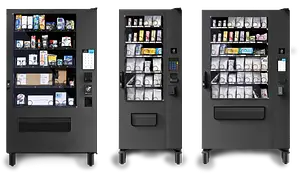
Pharmaceutical dispensing machines for stable patients receiving prescriptions for diagnosed illnesses is becoming a cost and time-saving solution. This prescription dispenser machine allows consumers to pick up prescriptions after hours, which can be helpful for busy individuals and families to avoid long lines and lengthy conversations in the traditional pharmacy.
The Process
The process for filling a prescription at a healthcare medical vending machine is not much different compared with a traditional pharmacy prescription. A consumer phones a pharmacy to order a prescription. A pharmacist fills the prescription and adds it to a prescription dispenser machine where a consumer can pick it up, using a passcode, and paying with a credit or debit card.
Other pharmaceutical vending machines will accept prescriptions from the patient. These prescription dispensing machines are used overseas and in the U.S., which can be advantageous for busy hospitals, clinics, pharmacies and rural communities that have less access to medical care. Pharmaceutical supplies can also be among the vending machine products.
Some pharmacy dispensing machine companies require the patient to speak with a pharmacist by video phone before the prescription can be dispensed.
The Advantages
While the traditional pharmacist is helpful in the cases when a patient is prescribed a new, unfamiliar drug, because she can help explain potential side effects and discuss any concerns, a familiar drug obtained by refill may not require the human interaction element. Bypassing it with a pharmaceutical dispenser machine can save time and money, and improve customer service through a patient-centered model.
Other advantages of prescription vending machines include removing the barrier to patients feeling empowered to handle health-related matters more independently.

